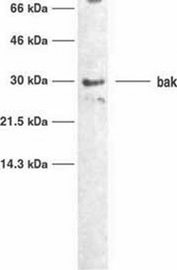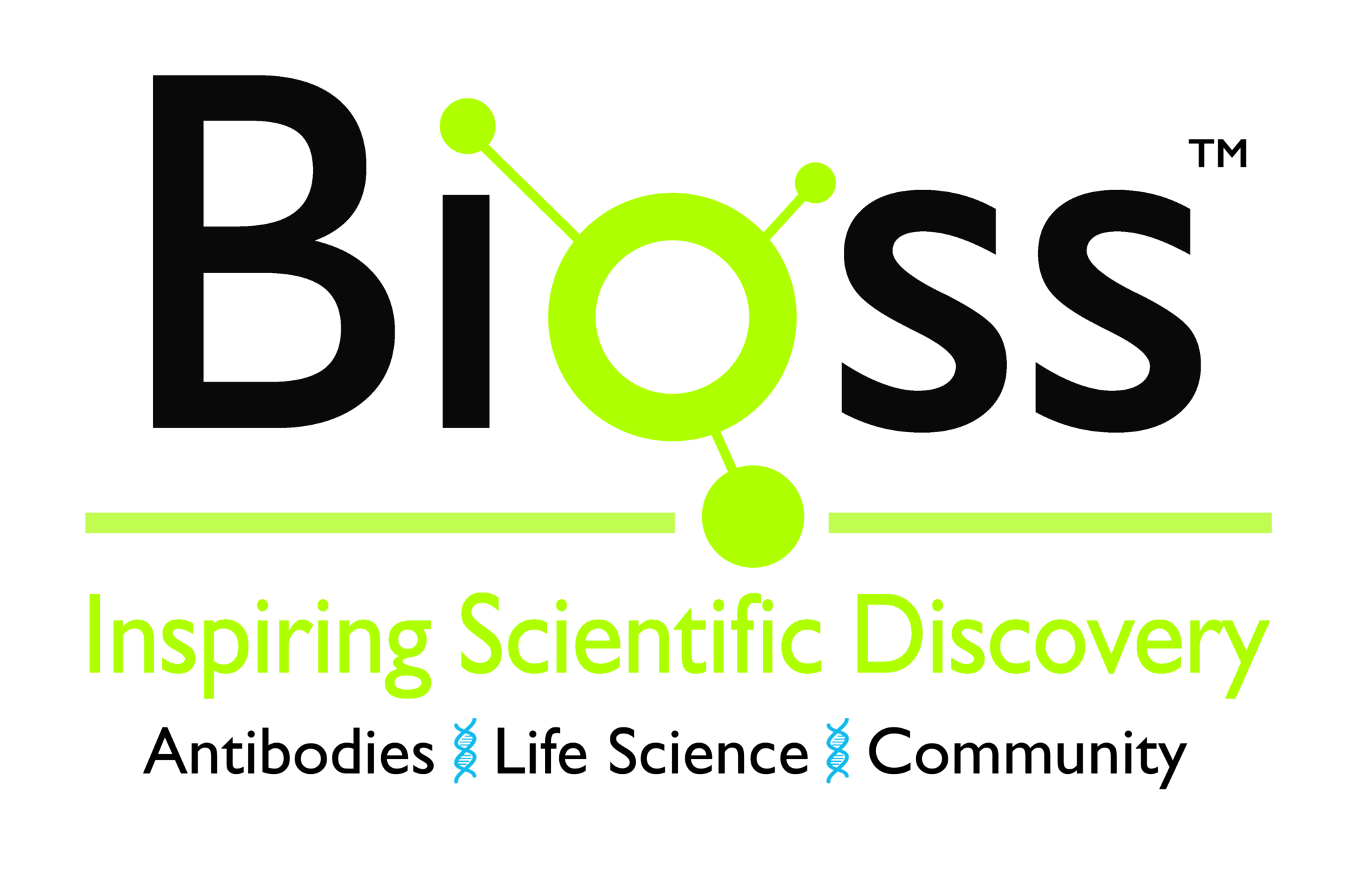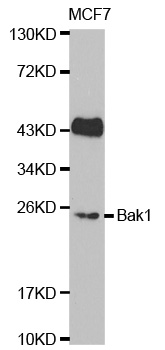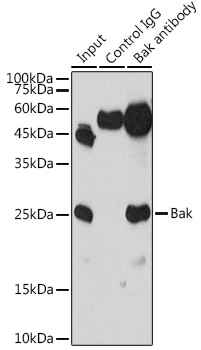
Detection of human Bak by immunoblotting. Sample: Whole cell lysates from untreated HL-60 cells. Primary antibody: Anti-Bak (Ab-1) Mouse mAb (TC-100) (GTX10808) (2 microg/ml). Detection: Chemiluminescence.
BAK antibody [TC100]
GTX10808
ApplicationsWestern Blot, ImmunoHistoChemistry, ImmunoHistoChemistry Frozen
Product group Antibodies
TargetBAK1
Overview
- SupplierGeneTex
- Product NameBAK antibody [TC100]
- Delivery Days Customer9
- Application Supplier NoteIHC-Fr: Use at a concentration of 1 - 5 microg/ml. WB: Use at a concentration of 2 - 5 microg/ml. Detects a band of approximately 30 kDa (predicted molecular weight: 23.4 kDa). Optimal dilutions/concentrations should be determined by the end user.
- ApplicationsWestern Blot, ImmunoHistoChemistry, ImmunoHistoChemistry Frozen
- CertificationResearch Use Only
- ClonalityMonoclonal
- Clone IDTC100
- Concentration0.1 mg/ml
- ConjugateUnconjugated
- Gene ID578
- Target nameBAK1
- Target descriptionBCL2 antagonist/killer 1
- Target synonymsBAK, BAK-LIKE, BCL2L7, CDN1, bcl-2 homologous antagonist/killer, BCL2-like 7 protein, apoptosis regulator BAK, bcl-2-like protein 7, bcl2-L-7, pro-apoptotic protein BAK
- HostMouse
- IsotypeIgG2a
- Protein IDQ16611
- Protein NameBcl-2 homologous antagonist/killer
- Scientific DescriptionThe protein encoded by this gene belongs to the BCL2 protein family. BCL2 family members form oligomers or heterodimers and act as anti- or pro-apoptotic regulators that are involved in a wide variety of cellular activities. This protein localizes to mitochondria, and functions to induce apoptosis. It interacts with and accelerates the opening of the mitochondrial voltage-dependent anion channel, which leads to a loss in membrane potential and the release of cytochrome c. This protein also interacts with the tumor suppressor P53 after exposure to cell stress. [provided by RefSeq, Jul 2008]
- Storage Instruction-20°C or -80°C,2°C to 8°C
- UNSPSC12352203





